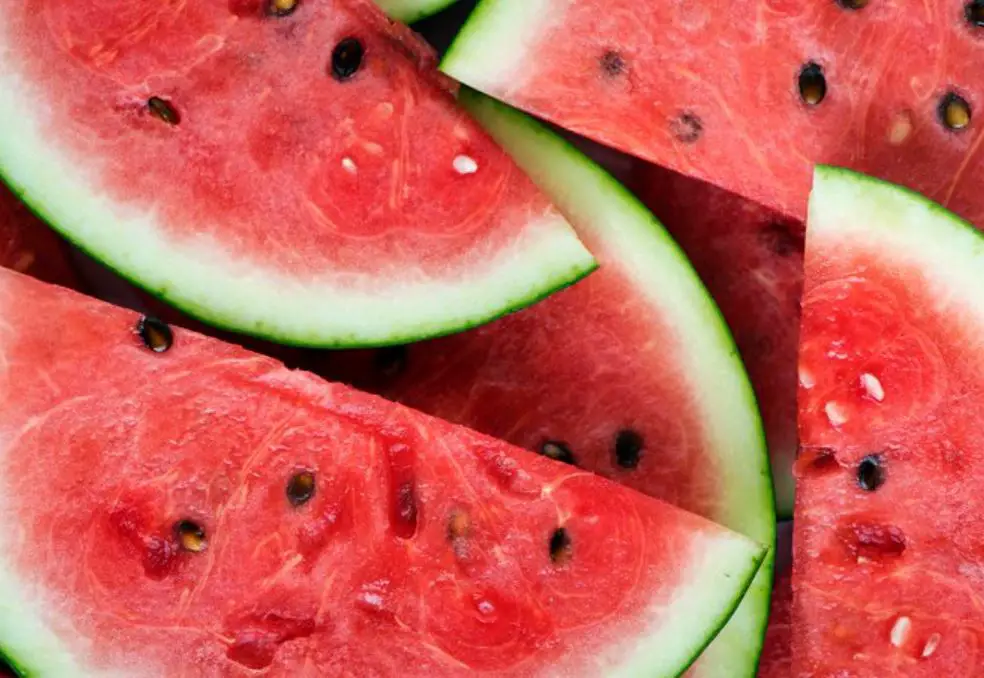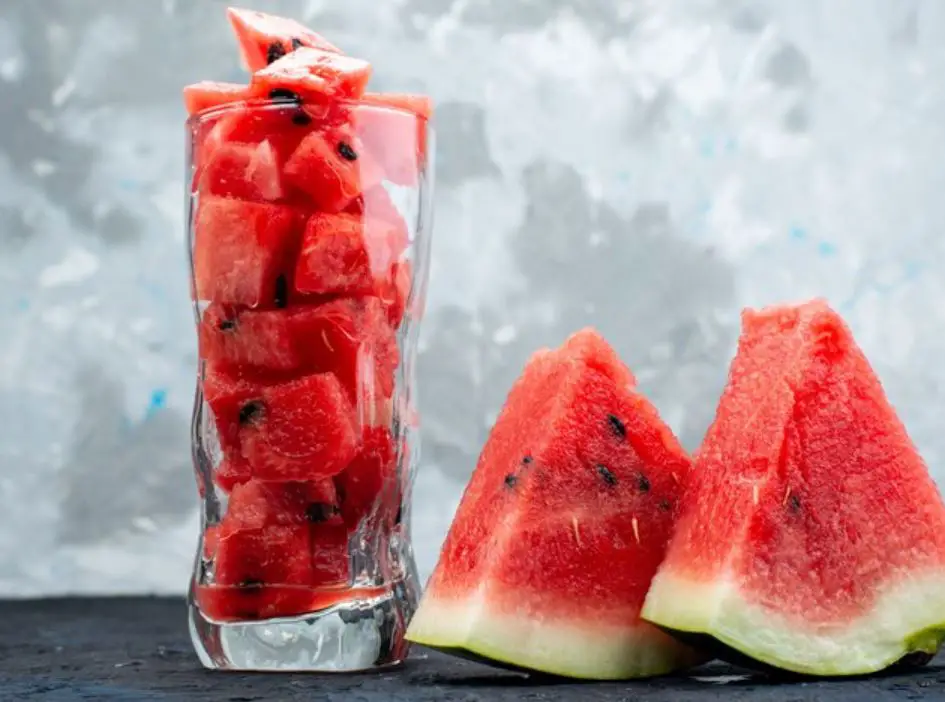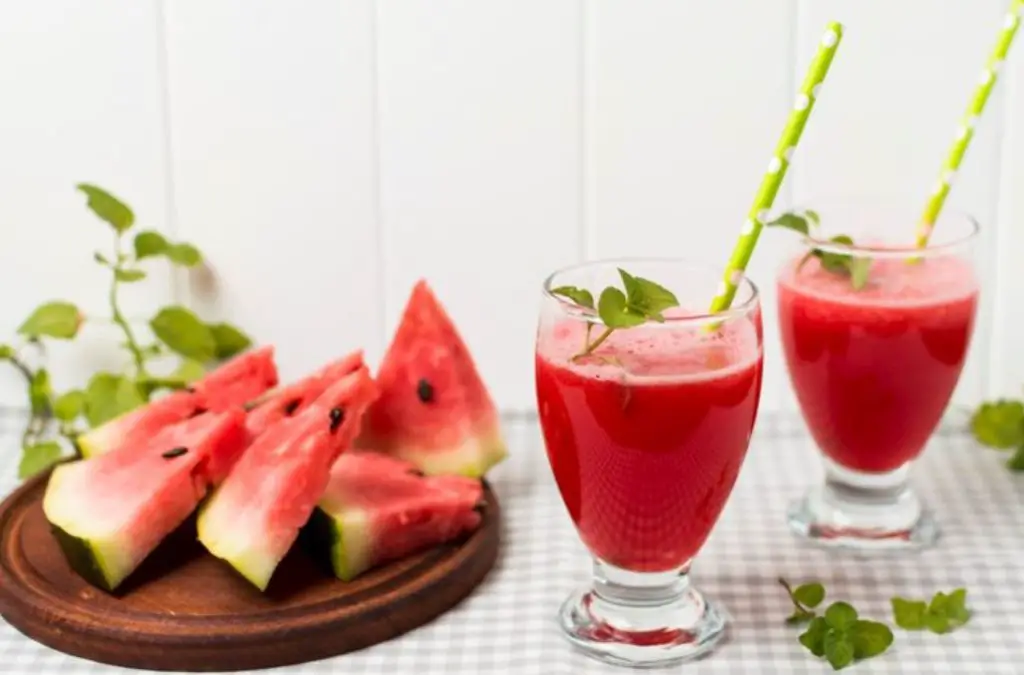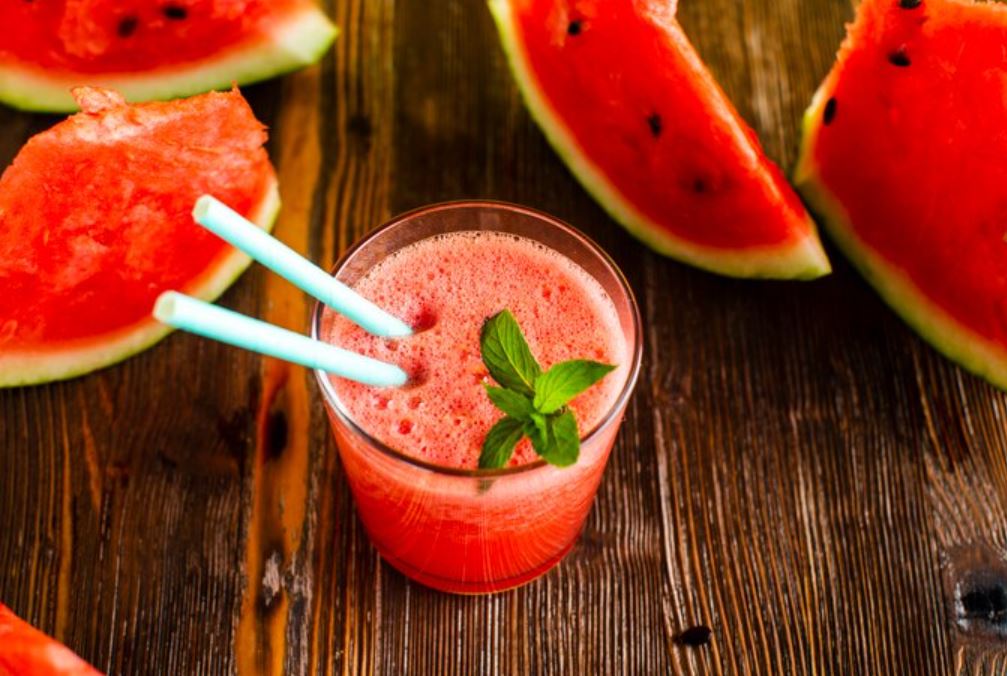Introduction to Watermelon Moonshine Recipe
Embracing the craft of homemade moonshine opens a world of rich flavors and traditions. Among these, watermelon moonshine stands out as a unique and refreshing choice. This delightful concoction marries the rustic charm of traditional moonshine with the sweet, summery essence of watermelon, creating a beverage that’s both flavorful and deeply satisfying.
The Appeal of Homemade Moonshine
Homemade moonshine has gained popularity for its authenticity and the personal touch it allows. It’s a celebration of heritage, a nod to the days of old, and a chance to experiment with flavors. Watermelon moonshine Recipe, in particular, offers a unique twist, combining the robustness of classic moonshine with the light, fruity notes of watermelon.
Watermelon Flavor in Moonshine
Incorporating watermelon into moonshine results in a drink that’s both potent and palatable. The natural sweetness of the watermelon complements the strong, spirited base of the moonshine, creating a harmonious blend that’s both invigorating and enjoyable.
Essential Ingredients
Crafting watermelon moonshine begins with selecting the right ingredients. The quality of these components directly influences the flavor and quality of the final product.
Choosing the Right Watermelons Moonshine
The key to a flavorful watermelon moonshine is, unsurprisingly, the watermelon itself. Opt for ripe, juicy watermelons with a deep red flesh. The ripeness of the fruit is crucial as it provides the natural sweetness and robust watermelon flavor desired in the moonshine.
Key Ingredients for Moonshine
Apart from watermelon, traditional moonshine ingredients include cornmeal, sugar, yeast, and water. These elements form the backbone of the moonshine, with the cornmeal providing the classic moonshine taste, the sugar aiding in fermentation, and the yeast being the catalyst for this process.
Safety Precautions in Moonshine Moonshine Making
Creating moonshine at home is an adventurous endeavor, but it’s crucial to approach it with an understanding of the risks and necessary safety measures.
Understanding the Risks
Moonshine making, particularly the distillation process, involves significant risks. The primary concern is the potential for the still to produce methanol, a toxic form of alcohol. Consuming methanol can lead to serious health issues, including blindness. Additionally, the distillation process involves flammable materials, posing a risk of fire or explosion if not handled correctly.
Essential Safety Equipment
To mitigate these risks, it’s important to use the right equipment and follow safety protocols. Use a well-constructed still, ensure proper ventilation in your workspace, and never leave the distillation process unattended. Wearing safety goggles, gloves, and having a fire extinguisher nearby are also prudent measures.

Step-by-Step Watermelon Moonshine Recipe
This section guides you through the process of making watermelon moonshine, from preparing the fruit to the final distillation.
Preparing the Watermelon
Start by selecting ripe, juicy watermelons. Cut the watermelons into chunks, removing the rind and seeds. Puree the flesh to extract the juice, which will form the base of your moonshine. Strain the juice to remove any solid particles, as a clear juice is crucial for a smooth fermentation process.
Fermentation Process
In a large fermentation vessel, combine the watermelon juice with cornmeal, sugar, and yeast. The cornmeal provides the necessary nutrients for the yeast, while the sugar aids in fermentation. Stir the mixture thoroughly and cover it with an airlock to allow gases to escape while preventing contamination. Store the vessel in a cool, dark place for about a week, allowing the yeast to convert the sugars into alcohol.
Distillation Techniques
After fermentation, the next step is distillation. Transfer the fermented mixture to a still and slowly heat it. The alcohol will vaporize at a lower temperature than water, allowing you to collect the alcohol vapor, which then condenses back into liquid form. Monitor the temperature closely and discard the first and last portions of the distillate to avoid methanol and other impurities. The middle portion, known as the “hearts,” is your desired watermelon moonshine.
Flavoring and Sweetening
Enhancing your watermelon moonshine with the right balance of flavors and sweetness is key to creating a delightful beverage.
Natural vs. Artificial Flavors
When it comes to flavoring, you have the choice between natural and artificial options. Natural flavors, such as fresh fruits, herbs, or spices, can impart a more authentic and rich taste. Artificial flavors, while convenient, may not provide the same depth of flavor but can offer consistency and a longer shelf life.
Balancing Sweetness
The sweetness level in moonshine can significantly affect its taste. Natural sweetness from the watermelon might be sufficient, but you can adjust it according to your preference. If additional sweetening is needed, consider using natural sweeteners like honey or cane sugar, which can complement the watermelon’s flavor without overpowering it.
Watermelon Moonshine Distillation Equipment
Choosing the right equipment is crucial for the successful distillation of moonshine.
DIY Setup vs. Professional Kits
For enthusiasts, a DIY setup can be a rewarding project, but it requires technical knowledge and precision. Professional distillation kits, on the other hand, offer convenience and safety, with pre-assembled components that are ready to use. These kits are often designed for optimal performance and consistency.
Maintenance and Care
Regardless of your choice, maintaining your equipment is essential for safe and effective distillation. Regular cleaning and inspection of the still, particularly for leaks or wear, are crucial. Proper storage and handling of the equipment will also prolong its lifespan and ensure the quality of your moonshine.
The Legal Aspect of Moonshine Production
Navigating the legalities of moonshine production is essential for anyone interested in this craft.
Understanding Local Laws
Moonshine production, particularly distillation, is regulated in many regions. It’s crucial to understand and adhere to local laws to avoid legal complications. In some areas, producing moonshine for personal consumption is illegal, while in others, it may require specific licenses or permits.
Legal Alternatives
For those in regions where moonshine production is restricted, exploring legal alternatives is advisable. This might include purchasing commercially-produced moonshine or participating in distilling workshops. These options allow enthusiasts to enjoy the flavors and craft of moonshine within the bounds of the law.
Watermelon Moonshine Recipe: Storing and Aging
Proper storage and aging can significantly enhance the quality and flavor of moonshine.
Ideal Storage Conditions
Store moonshine in a cool, dark place to preserve its quality. Exposure to light and fluctuating temperatures can affect the flavor and stability of the moonshine. Glass containers with airtight seals are preferred for storage, as they do not react with the alcohol and maintain its purity.
Aging Process and Its Impact on Flavor
Aging moonshine can develop its flavors and smoothness. This process involves storing the moonshine in barrels or containers for an extended period, allowing it to interact with the material of the container (often wood). This interaction can impart additional flavors and mellow the harshness of the alcohol, resulting in a more refined and complex beverage.

Serving Suggestions
Presenting your watermelon moonshine Recipe in creative ways can enhance the drinking experience.
Creative Cocktail Recipes
Watermelon moonshine can be the base for a variety of refreshing cocktails. Consider mixing it with lemonade for a summery drink, or combine it with sparkling water and a splash of lime for a light and fizzy option. For a more elaborate cocktail, mix it with other spirits, fruit juices, and herbs to create unique blends that highlight the watermelon flavor.
Pairing with Food
When it comes to food pairing, watermelon moonshine’s sweet and fruity profile complements a range of dishes. It pairs well with light appetizers, seafood, and grilled meats. For a delightful contrast, serve it with spicy or tangy foods, allowing the sweetness of the moonshine to balance the flavors.
Health Considerations and Moderation
While enjoying watermelon moonshine, it’s important to be mindful of health considerations and practice responsible drinking.
Alcohol Content and Consumption
Be aware of the alcohol content in your homemade moonshine. Since it can be higher than commercial spirits, moderate consumption is key. Understanding your limits and the effects of high-proof alcohol is important to ensure a safe and enjoyable experience.
Responsible Drinking Practices
Always practice responsible drinking. This includes not drinking and driving, understanding how alcohol affects your body, and not consuming alcohol if you have certain medical conditions or are taking medication that interacts with alcohol. Encourage guests to drink responsibly and offer non-alcoholic alternatives for those who prefer them.
Troubleshooting Common Issues
Even experienced moonshiners can encounter issues during the fermentation and distillation processes. Understanding how to address these challenges is key to successful moonshine making.
Fermentation Problems
Common fermentation problems include a lack of activity or a stuck fermentation. This can be due to factors like incorrect temperature, poor yeast health, or an imbalance in the sugar content. To resolve these issues, ensure the fermentation mixture is at the correct temperature and consider adding more yeast if necessary. Also, check the sugar levels and adjust them to provide the yeast with enough food to ferment.
Distillation Challenges
During distillation, issues such as uneven heating, incorrect temperature control, or impurities in the final product can arise. Maintaining a consistent heat source and carefully monitoring the temperature throughout the process are crucial. Additionally, be vigilant in discarding the ‘heads’ and ‘tails’ of the distillate, which contain unwanted compounds, focusing on collecting the ‘hearts’ for the best quality moonshine.
The History and Culture of Moonshine
Moonshine has a rich history and cultural significance, particularly in American culture.
Moonshine in American Culture
In American history, moonshine is often associated with the Prohibition era, but its roots go much deeper. Originally a means for early settlers to utilize excess grain, it became a symbol of rebellion against taxation and government control. Moonshine played a significant role in the development of car racing, as bootleggers modified cars to outrun law enforcement, eventually leading to the creation of NASCAR.
Evolution of Watermelon Moonshine Recipe
Over the years, moonshine recipes have evolved significantly. Initially, moonshine was made with basic ingredients and rudimentary equipment, focusing more on quantity than quality. Today, with the resurgence of craft distilling, moonshine recipes have become more sophisticated, incorporating various flavors and refining techniques to produce high-quality spirits that honor the tradition while embracing modern tastes.

FAQs on Watermelon Moonshine
How long does it take to make watermelon moonshine Recipe?
The entire process, from fermentation to distillation, can take several weeks. Fermentation alone usually takes about one week, while the distillation process can vary in length depending on the setup and batch size.
Can I use store-bought watermelon juice for making moonshine?
Yes, you can use store-bought watermelon juice, but ensure it’s pure and without added sugars or preservatives for the best results. Freshly extracted juice from ripe watermelons is preferable for a more authentic flavor.
Is it necessary to age watermelon moonshine?
Aging is not necessary, but it can enhance the flavor and smoothness of the moonshine. If you choose to age your moonshine, it can be done for several months to a few years in suitable containers, like oak barrels.
How can I tell if my moonshine is safe to drink?
Ensuring safety involves careful distillation and discarding the ‘heads’ and ‘tails’ of the distillate, which contain harmful compounds. Using proper equipment and following safety guidelines are crucial. However, if you’re unsure, it’s best to seek advice from experienced distillers.
What are some good mixers for watermelon moonshine?
Watermelon moonshine pairs well with a variety of mixers. Lemonade, ginger ale, and club soda are popular choices. For a more complex cocktail, mix it with other spirits, citrus juices, or herbal syrups.
Conclusion
Watermelon moonshine Recipe is a delightful twist on traditional moonshine, offering a sweet and refreshing flavor profile. From selecting the right ingredients to understanding the distillation process, making watermelon moonshine can be a rewarding experience. While it requires patience and attention to detail, the result is a unique and enjoyable spirit that captures the essence of summer. Remember to always prioritize safety and legality in your moonshine-making endeavors. Whether enjoyed on its own, in a cocktail, or shared with friends, watermelon moonshine is a testament to the creativity and enduring appeal of homemade spirits.
Watermelon Moonshine Recipe
Summer Breeze Watermelon Moonshine
Ingredients:
- 8 cups watermelon, pureed
- 2 cups granulated sugar
- 1 gallon water
- 1 packet of yeast (specific for distilling)
- 1 lemon, juiced
Directions:
- In a large container, combine watermelon puree, sugar, and water. Stir until the sugar is completely dissolved.
- Add the yeast to the mixture, following the instructions on the yeast packet.
- Cover the container with a cloth and let it ferment in a cool, dark place for about a week, or until fermentation stops.
- Strain the mixture through a fine mesh to remove solids.
- Add lemon juice to the strained liquid.
- Carefully mix in the high-proof grain alcohol.
- Bottle the moonshine and let it age for at least two weeks before consuming.
Prep Time: 30 minutes | Fermentation Time: 1 week | Aging Time: 2 weeks | Total Time: 3 weeks and 30 minutes
Kcal: 220 kcal per serving | Servings: 15 servings


